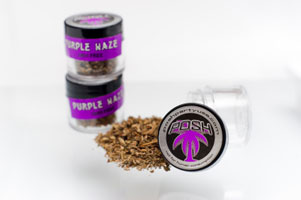08 Jul 2011
Starting Over: Embracing Life in Recovery
It can be the best of times or the worst of times, to paraphrase the opening sentence of Charles Dickens’ A Tale of Two Cities. What we’re referring to is the journey you begin after rehab for substance abuse or other addictive behavior, the phase when you start recovery. Many people are scared to death to start over. Not only has rehab been filled with uncertainty and ambivalence, even with the best intentions, the prospect of living clean and sober is almost too much to contemplate.
Read More
A recent report from the United States Substance Abuse and Mental Health Services Administration, or SAMHSA, showed rehab admission increases that were overwhelming in the past ten years. The 2009 study concluded that of the rehab admissions, totaling nearly 2 million, 96 percent were related mostly to alcohol, which held 42 percent of the total and the smallest being methamphetamine/amphetamines at just 6 percent.
Read More
30 Jun 2011
Location of Drug Rehab May Help Recovery
Once someone addicted to drugs has made the decision to enter drug rehab, she then must decide where to go. Drug rehabs have proliferated across the United States and overseas, making it very likely that there is a drug rehab right in the person’s own back yard. However, should a person attend a drug rehab too close to home? There are pros and cons for each option that need to be carefully considered before a decision is made.
Read More
A new government study shows that more people are getting treatment for prescription drug abuse than they were ten years ago, and alcohol treatment is increasing after declining for several years.
Read More
In a collaborative report released earlier this year by the Centers for Disease Control and Prevention, the University of North Carolina, and Duke University Medical Center, it was revealed that accidental overdoses from prescription opiate-based pain medications such as OxyContin killed more people in 2007 than heroin and cocaine combined.
Read More
A new study from Great Britain found that heavy cocaine users have abnormal brain scans, and that the abnormalities may be what causes the addiction, and not vice versa.
Read More
23 Jun 2011
The Dangers of Synthetic Marijuana
Synthetic marijuana has been available since 2006 but has recently gained in popularity. Sold under the names of K2, Spice, Black Mamba, Blaze, and Red X Dawn, it was touted as the legal marijuana and was, therefore, a very attractive alternative to the real thing. But, as the prescription drug epidemic has shown, legal doesn’t mean safe.
In March of 2011, the DEA issued a statement that prohibited the production, possession, and sale of any of the five different chemicals that are used to produce fake marijuana. This makes its byproducts such as K2 and Spice illegal as well.
Harmful Side Effects of Fake Marijuana
 Synthetic marijuana was sold at tobacco shops and gas stations, and was marketed as tea, incense, or herbs. The herbs were sprayed with chemicals that mimic the psychoactive properties of THC. Unlike marijuana, though, fake pot cannot be combined with alcohol without making the person extremely ill. Dawn Dearden, spokeswoman for the DEA also points out that since these synthetic marijuana substitutes are not produced in a controlled environment, their purity and dosage are not regulated or consistent.
Synthetic marijuana was sold at tobacco shops and gas stations, and was marketed as tea, incense, or herbs. The herbs were sprayed with chemicals that mimic the psychoactive properties of THC. Unlike marijuana, though, fake pot cannot be combined with alcohol without making the person extremely ill. Dawn Dearden, spokeswoman for the DEA also points out that since these synthetic marijuana substitutes are not produced in a controlled environment, their purity and dosage are not regulated or consistent.
Since these compounds have only been around since 2006, their long-term side effects have not been well-studied or documented. However, acute side effects of fake marijuana include trouble breathing, heart palpitations, panic attacks, hallucinations, vomiting, and seizures. There have also been two reported cases of suicide that have resulted from hallucinations.
Synthetic Marijuana’s Chemicals Stay in the Body Longer than THC
While chemicals in synthetic marijuana mimic the effects of THC, they are very different. THC doesn’t stay in a person’s system for very long, whereas, the chemicals used to make K2 and Spice are stronger and bind more permanently to receptors in the body. They remain longer in the brain and other organs. They are also not as quick to bind to receptors in the body as THC, which means that there is an increased risk of overdose as individuals ingest more because they can’t immediately feel its effects.
K2 and Spice do not show up in traditional urine analysis either, which makes them even more attractive. According to the Los Angeles Times, ten individuals in one month were admitted to the Naval Medical Center in San Diego for treatment of psychosis resulting from the use of Spice. Many of the individuals experienced paranoia, delusions, and suicidal thoughts that did not go away for up to a week. Others, however, were not so lucky, with symptoms persisting three months after the exposure.
Synthetic Marijuana Hard to Detect in Tests
The drugs also are a cause of concern for residential drug rehab patients. With only one very expensive test available to test its presence, many drug rehabs cannot afford to test everyone; those in recovery could easily sneak it on the side and appear “clean.” Because of its accessibility, teens are also another target for the drug. Rehabilitation centers have already documented incidences of teens addicted to the strong chemicals lacing K2 and Spice.
Those who have developed a dependence on fake marijuana can benefit from treatment at a marijuana rehab center.
People in residential treatment for both depression and substance abuse could benefit from cognitive behavioral therapy, according to a new study from the RAND Corp.


